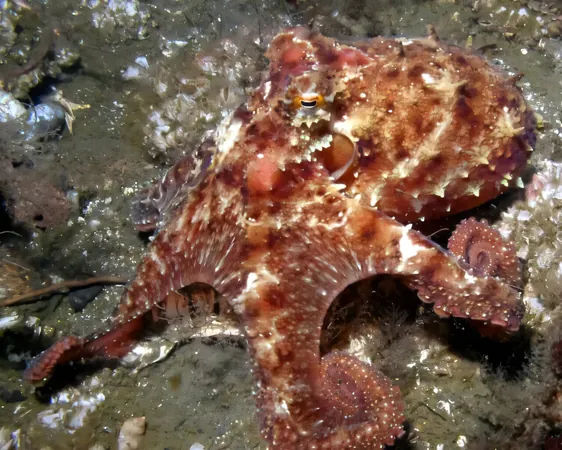
Groundbreaking NIH Grant Aims to Unravel the Mysteries of Hearing Loss and Sound Localization
2024-11-20
Author: Siti
Key Insights:
1. Innovative Research Approach: Dr. Day's study will utilize animal models, particularly rabbits, to delve into how hearing loss affects the midbrain's inferior colliculus—an area critical for sound localization. This approach allows for a close examination of changes in auditory processing due to hearing impairment.
2. Interdisciplinary Success: Collaborating with co-investigators from the Department of Biological Sciences and Biomedical Sciences, the project integrates efforts from students and faculty, promoting educational opportunities alongside robust scientific inquiry. This collaboration underscores the importance of a multidisciplinary approach in tackling complex health issues.
3. Clinical Relevance: The outcomes of this research could lead to groundbreaking interventions for individuals who struggle with sound localization due to hearing loss. By understanding the underlying neural changes, new preventive measures and treatments could be developed, significantly improving the quality of life for millions.
The Challenge of Hearing Loss
With projections from the World Health Organization indicating that over 700 million individuals will experience disabling hearing loss by 2050, this research is timely and critical. Dr. Day emphasizes that traditional hearing aids often enhance sound volume but do not effectively assist with the complex processing needs of the brain during auditory experiences. "People may hear sounds, but distinguishing their origins becomes a challenge," he explains, highlighting the need for more targeted solutions.
Exploring Neural Connections
Using microelectrodes implanted in the inferior colliculus of rabbits, researchers aim to measure neuronal activity as these animals listen to sounds from various locations. By doing so, they hope to understand whether and how sound localization processes are altered in those with hearing impairments.
Key observations may reveal that neurons, which normally exhibit significant changes in their firing rates based on sound location, show diminished responsiveness in hearing-impaired animals. Such findings could expose critical flaws in the neural encoding of sound information, shedding light on the brain's adaptations (or maladaptations) to hearing loss.
A Collaborative Network
Alongside Dr. Day, the research team includes Soichi Tanda, PhD, and Mark Berryman, PhD, who are studying cochlear tissue damage due to noise exposure. This vital work is expected to bring insights about the anatomical changes associated with auditory deficits. Berryman emphasizes the importance of understanding how noise exposure can inflict long-term damage on hearing capabilities.
Graduate student Olivia Barnes is also contributing her efforts by investigating the inferior colliculus's response to noise-induced hearing loss. The integration of undergraduate researchers into the project represents an initiative to prepare the next generation of scientists while combating hearing loss.
Looking Ahead
As the study launches into its three-year timeline, Dr. Day notes that the findings could revolutionize how hearing loss is treated. "By pinpointing the neural basis for sound localization deficits, we can explore remedies for these challenges."
This pioneering research is not only a fundamental step towards addressing hearing loss but also addresses a vital public health issue that affects people of all ages. With continued inquiry into the nuances of auditory processing, the hope is to uncover the mysteries that lie within our brains and ears, bringing us closer to effective solutions for hearing loss.
As this important journey unfolds, it symbolizes a commitment to understanding and combating a pervasive problem that resonates deeply across society. Stay tuned for more updates on this critical research initiative!




 Brasil (PT)
Brasil (PT)
 Canada (EN)
Canada (EN)
 Chile (ES)
Chile (ES)
 España (ES)
España (ES)
 France (FR)
France (FR)
 Hong Kong (EN)
Hong Kong (EN)
 Italia (IT)
Italia (IT)
 日本 (JA)
日本 (JA)
 Magyarország (HU)
Magyarország (HU)
 Norge (NO)
Norge (NO)
 Polska (PL)
Polska (PL)
 Schweiz (DE)
Schweiz (DE)
 Singapore (EN)
Singapore (EN)
 Sverige (SV)
Sverige (SV)
 Suomi (FI)
Suomi (FI)
 Türkiye (TR)
Türkiye (TR)